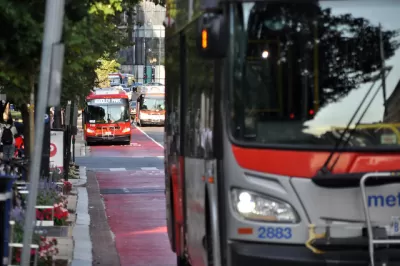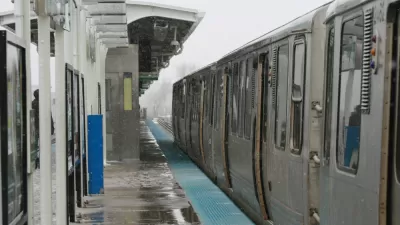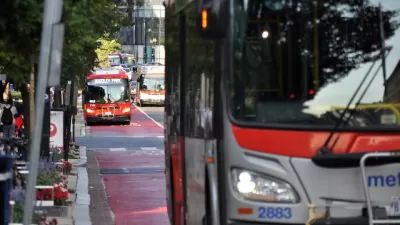Transit service in the District has not yet recovered to pre-pandemic levels, with Black and low-income riders feeling the brunt of the impact.

A blog post from TransitCenter, using data from their Transit Equity Dashboard, assesses the state of Washington, D.C.’s post-Covid transit recovery, which, according to the post, “has been slow and bumpy.”
Unlike other cities that have restored service to pre-pandemic levels, the blog notes that “In August 2022, Washingtonians could access only 91% of the jobs that were accessible by transit in February 2020. In fact, since March 2020, DC residents have never had a level of transit access equal to before the pandemic.”
When it comes to equity, the picture is equally bleak. “White and Asian communities consistently have much better transit service than Black, Hispanic, and low-income communities across every tracked metric. This is despite the fact that Black and Hispanic people are more likely to commute by transit – 17% of Black and Hispanic residents of the District commuted on public transit in 2021, compared to only 7% of White and Asian residents.” Black District residents are able to access 55 percent as many jobs as white residents, 5 percent lower than before the pandemic disrupted transit services. Black residents also have longer trips to reach their nearest hospital.
The blog notes that D.C. transit services are slowly improving, but vast racial and economic disparities remain. See the blog post, linked below, for more details on the District’s transit recovery.
FULL STORY: Checking in on Washington DC’s Transit Recovery

Alabama: Trump Terminates Settlements for Black Communities Harmed By Raw Sewage
Trump deemed the landmark civil rights agreement “illegal DEI and environmental justice policy.”

Planetizen Federal Action Tracker
A weekly monitor of how Trump’s orders and actions are impacting planners and planning in America.

Why Should We Subsidize Public Transportation?
Many public transit agencies face financial stress due to rising costs, declining fare revenue, and declining subsidies. Transit advocates must provide a strong business case for increasing public transit funding.

Understanding Road Diets
An explainer from Momentum highlights the advantages of reducing vehicle lanes in favor of more bike, transit, and pedestrian infrastructure.

New California Law Regulates Warehouse Pollution
A new law tightens building and emissions regulations for large distribution warehouses to mitigate air pollution and traffic in surrounding communities.

Phoenix Announces Opening Date for Light Rail Extension
The South Central extension will connect South Phoenix to downtown and other major hubs starting on June 7.
Urban Design for Planners 1: Software Tools
This six-course series explores essential urban design concepts using open source software and equips planners with the tools they need to participate fully in the urban design process.
Planning for Universal Design
Learn the tools for implementing Universal Design in planning regulations.
Caltrans
Smith Gee Studio
Institute for Housing and Urban Development Studies (IHS)
City of Grandview
Harvard GSD Executive Education
Toledo-Lucas County Plan Commissions
Salt Lake City
NYU Wagner Graduate School of Public Service





























